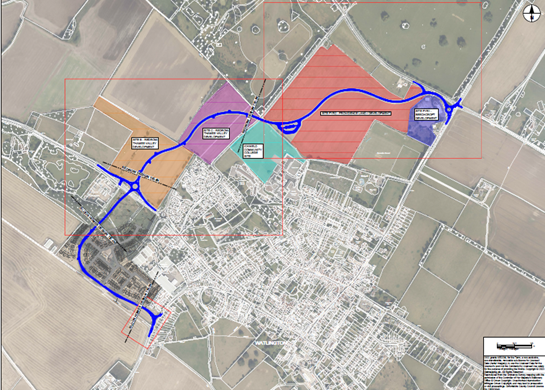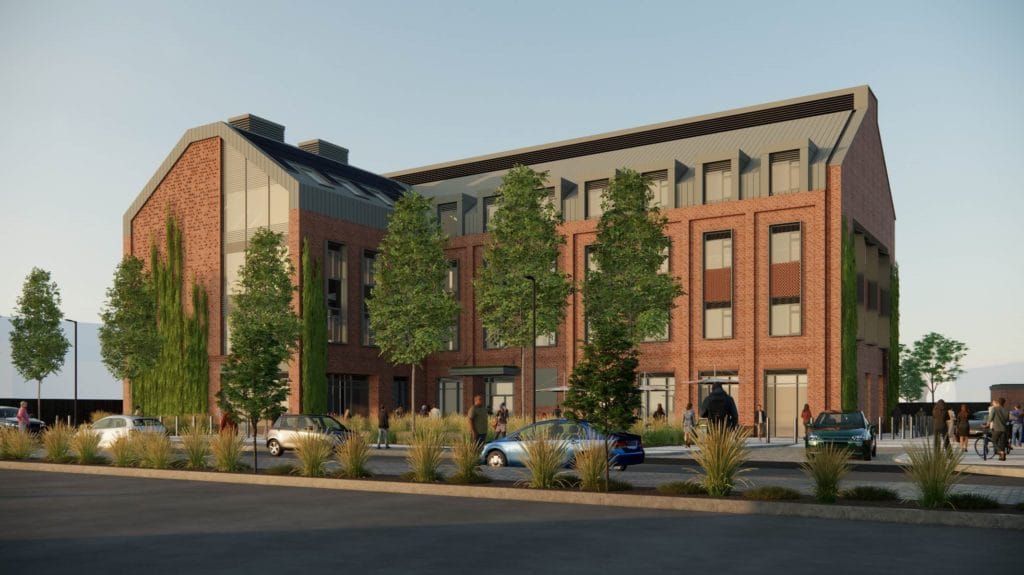There’s a pothole in the budget

Pothole enthusiasts of Oxfordshire, rejoice. At last the council is listening to you.
Oxfordshire County Council’s budget this year is (almost) all about roads. On Tuesday, councillors will be debating the draft budget put forward by the Liberal Democrat and Green administration – and proposing their own amendments. Just like last year, we read the documents so you don’t have to.
We’ll cut straight to the headline figures.
- £58.9m on “the improvement of the highway network” (£38.6m on potholes, £16.2m on bridge repairs, £4m on road safety)
- £10.6m on “safety, schools and business critical services” (inc. £4.9m on Redbridge tip, £2.5m on council IT)
- £2.9m on “schemes that generate revenue” (inc. £1.9m on supported accommodation)
- £11.8m on “energy efficiency” in council-owned buildings (e.g. replacing worn-out heating systems)
- £4m on “transport schemes” to match funds from housing developers
- £15.2m on “active travel and market towns”
That last figure is a little misleading. You could build a lot of cycleways for £15.2m, but that’s not what’s happening. £11.1m of it is for the Watlington Relief Road, which is a road scheme with a cursory cycleway beside it. So we’ll shift that into the roads column.
That makes £103.3m of big-ticket spending (in budget speak, “high priority capital schemes”). £74m of this, just under three-quarters, is going on roads. All this from the council described by the Telegraph as waging a “war on motorists”.
In fact, Clarion calculations suggest that over the next five years, Oxfordshire County Council projects spending £1.04bn on the county’s roads vs £51m on active travel – a difference of over 20:1. Of course, there’s no clear line between the two: cyclists hate potholes too. But by headlining one section as “the highway network” and another as “active travel”, OCC is inviting comparison.
Watlington City Limits

One of the most curious lines in the budget is the Watlington Relief Road.
This sinuous road west of the little south Oxfordshire town is a classic example of the 21st century bypass. Its aim is not so much to speed motorists past Watlington as to provide a ‘new frontier’ along which housing estates will be built. Like most of Oxfordshire’s new roads, it’s positioned as a means to an end: more, much needed housing.
Opinions are divided. Watlington Parish Council is a big fan: it wrote the road into its Neighbourhood Plan. Residents of the hundreds of new houses will see a direct benefit. But traders are worried about the loss of passing trade, while the Oxfordshire Roads Action Alliance says it will end up attracting long-distance HGV traffic: “the council has no amelioration plan for what happens to communities around Watlington”.
Government housing funds were originally to be tapped for £7.1m towards the cost. Project delays meant it missed the deadline, and Oxfordshire County Council is now on the hook for £11.1m of the £19.3m total. It is unusual for OCC to fund quite so much of a major road scheme itself.
Equally unusual is the decision to list this under “schemes that encourage and facilitate active travel and improve market towns”. The active travel part of the scheme is substandard (or so says Active Travel England, the government’s cycling and walking body) and fairly minor. Yes, it’s in a market town, but so are 250,000 of Oxfordshire’s 750,000 residents – more than Oxford itself.
By comparison, the biggest budget line for a genuine active travel scheme is £1.8m “to encourage active travel in rural areas”, spread among the 340,000 rural residents (£5 each). Thame residents have been asking for a cycle path to Haddenham railway station for over a decade, with 400 riders of all ages attending a Kidical Mass rally last year; their reward is £200,000 towards a feasibility study.
No alarms and no surprises, please
The funding gods have smiled benevolently on OCC this year. Government funding schemes such as the New Homes Bonus and social care grants mean the balance is healthier than feared this time last year.
It won’t last. The new Government is redirecting funding towards more deprived areas. Good news for Oldham, not so much for Oxford. As the councillors who review Cabinet decisions (the ‘scrutiny committee’) point out:
“The positive surprises experienced this year will be outweighed by ongoing reductions in central government income in the future. Using the breathing space afforded by this temporary reduction in pressure to prepare the Council for more difficult years to come is imperative.”
Ten years ago Oxfordshire had 2,027 children with special needs ‘statements’ (EHCPs, Education & Health Care Plans). Now it has 7,318. Government funding is not keeping pace. Just a year ago, OCC expected annual spending to outweigh funding by £21m. In fact, the yearly deficit is now £28m. For now, councils are allowed to keep running up this debt, but the future is uncertain.
Devil in the detail

Social services and roads are the bread and butter of county council spending. Sometimes the most interesting items are tucked away further down the balance sheet.
- £5m is set aside for local government reorganisation. Given the huge changes a unitary council would bring, this is an understandable precaution. You feel for Vale of White Horse and South Oxfordshire, who have drawn up detailed plans for a new HQ in Didcot, and West Oxfordshire, which recently refitted its council chamber. Will these end up surplus to requirements when unitary councils come along?
- £1m is allocated to support rail infrastructure. This will mostly go to the Cowley Branch Line and Oxford station improvements.
- £0.9m for improvements to St Giles in Oxford: “socialising, greening, and improved access for pedestrians and cyclists”
- £0.5m for home improvement loans for foster carers
- £0.5m for a “nature catalyst investment facility”, unlocking private sector investment in habitat restoration
- £0.2m for Banbury Market, and £0.5m for Wantage Market. The Clarion approves.
The budget also contains a wishlist for future schemes, “pending funding becoming available”. None of these will be funded this year.
- £50m for two new 150-place special schools
- £45m to rebuild Carterton Community College, the only council-controlled (i.e. non-academy) secondary left in Oxfordshire: “school is in disrepair and not fit for purpose”
- £22m on recycling centres
- £18m to improve the A4095 around Bicester
- £1.5m for a “Bladon mobility hub”, a new Park & Ride at Woodstock
- £5m for the Thame–Haddenham cycle path
- £9m for the Milton Heights foot/cycle bridge over the A34
- And… £278m for potholes, £77m for bridge repairs, and £11m for road safety across the period to 2035
Time to make a change

The opposition parties are free to propose amendments to the budget, and they benefit from the assistance of council officers in reviewing them. The Liberal Democrat/Green administration doesn’t have a majority, so passing a budget will involve either agreeing to an amendment, or brazening it out and relying on councillors’ duty not to impede the functioning of the council.
Last year, Labour put forward a splashy amendment with many new spending commitments. These included more pothole repairs, a Citizens’ Assembly on transport, and cash for a ‘Mini-Holland’ in East Oxford to build on the existing Low Traffic Neighbourhoods. The LibDems and Greens agreed to this wholesale, and it became part of the adopted budget.
This year’s amendment is less splashy – Labour itself calls it “modest” – and is largely moving spending from one year to another, or within the same area. £200,000 from the rural active travel budget is diverted to Oxford Greenways. £120,000 comes off “developing services to support under 5 year olds” and goes to “extend SEND early-intervention support in Early Years and primary school settings”.
The Conservatives – winningly known in this context as the CIA, for ‘Conservative and Independent Alliance’ – are less timid. Their amendment has two headlines: £6m more on potholes, and a lower council tax rise (4.49% vs 4.99%). To fund this, out go the £1m on the Cowley Branch Line (far from Conservative heartlands) and Oxford station, much of the active travel spend, and £4m of the £5m earmarked for unitary council work.
Council departments such as Democratic Services, Marketing, and Policy are downsized. One budget line promises “Refocus Climate Team to release investment for potholes, flooding and drainge priorities”. Another would save just £7,000 but will generate more than that in headlines alone: “Remove catering at all council meetings”. No more vegan vol-au-vents.
This ruthless approach has meant discarding once-prized shibboleths. Since 2022, the Conservatives have been arguing for parking to be made free at Oxford’s Park & Rides. No more. This year, they have suggested reducing the County Council’s subsidy for P&R tickets – so the cost of parking and riding would go up, not down.
Labour’s modest amendment could be acceptable to the minority administration. It is vanishingly unlikely the LibDems and Greens will accept the Conservative amendments. We cannot see Oxfordshire’s Green councillors pressing their electronic voting buttons to “refocus the Climate Team” on potholes.
Say the right things (when electioneering)

So we return to the familiar Clarion mantra. Is it going on a leaflet?
We can already see the territory on which this year’s elections will be fought, and it is potholed. Conservative leaflets will say “We wanted to spend an extra £6m on fixing potholes – but the LibDems are spending it on their pet projects instead.” The LibDems will say “We have boosted pothole spending from £7m to £39m.” Labour will boast of their amendment last year, which devoted an extra £5m to potholes, and of their national Government’s pledge.
There’s another subtext to this year’s budget. The post-election horse-trading has already started. The Conservative amendment is overt:
“The CIA will nonetheless continue to work with Councillors of all political persuasions who share our view that blunt, anti-car policies such as bus gates, low-traffic neighbourhoods and the workplace parking tax will serve only to set back the environmental cause by damaging local businesses and public services.”
This could almost be a direct appeal to the Independent Oxford Alliance, who have no seats on the County Council right now, but could pick up four or more in May. Right now the Conservatives look unlikely to win an outright majority, but could a Conservative+IOA coalition outnumber the LibDems and Greens?
The vision thing
There is not a lot of vision in this year’s budget papers. The LibDems and Greens possibly come closest with their plans for a Nature Catalyst Investment Facility, enhancing St Giles, and supporting markets. But these are small change compared to the £38.6m on potholes.
For many (most?) voters, this will be good news. Not everyone wants their council to have a vision. Instead, they want it to fulfil its statutory duties – roads, social care, education – at minimum cost. A few will tell you the “clowncil” could fix all the potholes overnight if only it employed fewer diversity officers.
Is this you? Do you want your council to do more, or less? Are you angry about potholes – or do you think there’s more to Oxfordshire? Next time canvassers knock on your door, tell them. We get the council we deserve.
